So you want to check out West Africa with us – Awesome. We want to have you! Just make sure you are eligible to come with us.
Here’s what you’ll need
- A valid passport that will be valid for at least six (6) months after departure date.
- Be 21 years of age.
- Be able to obtain Visas (if required) for the Following Countries –
- Speak English.
- Things to Note for Traveller
- We are happy to help point you in the right direction however, All vaccines and Visas need to be paid for and obtained by Traveller.
- Flights to Freetown will be paid for from your nearest major international Airport.
- Travel insurance is not included.
- Food, Accommodation and volunteer expenses will be taken care of for traveller. Additional expenses such as souvenirs, gifts, alcohol etc, will not. Please remember to have some additional spending cash
- Lastly – Remember that even though you will be travelling together with Josh and johnny, They are not responsible for your safety and health while on tour. We are travelling as friends and each person is to look after themselves.
THE FULL INTINERARY
About SenExperience+:
We are an organisation based in Senegal and Gambia, working with projects in the local communities. The structure of the programmes that we have established means that our volunteers and participants will benefit from cultural exchange and strong links with the local population. Our activities allow us to forge close ties with the local people.
It is always at the request of the managers at local workplaces that we provide volunteers; as such volunteers can be assured their help is needed. Moreover, on a day-to-day basis, we seek to run our projects so that they meet the real needs of the local community and also those expressed by the participants and volunteers. Our relations with the local populations, the heads of the local communities, rural organisations such as the women´s associations, the hospitals where our volunteers work, schools, as well as our relations with the host families are not just limited to work, but we live alongside them and exchange ideas and thoughts throughout the year.
Why Senegal and Gambia in November 2015?
Josh and Jonny are two very good friends who are very much into travels and discovering different cultures. After many years of travelling to different countries and continents, they have decided to travel around Africa this year, embarking on a journey from Cape Town to Casablanca. They also want to give back and have decided to participate in community projects developed by the organisation SenExperience+ in Senegal and Gambia. They will work in a local orphanage, at nursery schools, and they will also make a difference by donating repaired and brand new tables to women working at the local market in Kolda. This will help these women to better run their businesses as local market traders, which in turn will increase the support they can offer to their families. A ceremony will be held during which the distribution of the tables to the local market women will take place.
During their stay in Senegal and Gambia, Josh, Johnny and the selected participant will be working hand in hand with the founder of SenExperience+, his team and the local communities in order to make their stay worthwhile.
Senegal in a Nutshell:
Combine the useful with the pleasant by discovering this culturally rich country, its 700 kilometres of fine sand beaches, its climatic diversity and the warm reception of its inhabitants.
Situated in West Africa, Senegal covers an area of 200, 000km2. It is a largely flat country, and thanks to its favourable climate has luxurious vegetation and a humid savanna. In the north, it rains for three months of the year, but it is the south that sees the heavier rains, with rainfall for 6 months out of 12. It is thanks to these rains that the southern region, the Casamance, is known for producing good harvests of a wide variety of crops, which it exports to the rest of the country. Unsurprisingly, the majority of farmers are based in this region.
Senegal´s latitude ranges from 12 to 17 north of the equator. It shares borders with a number of countries: Mauritania in the north, Gambia to the west (Gambia is in fact completely surrounded by Senegal), Mali to the east and Guinea and Guinea-Bissau in the south.
| About Gambia:
Situated in the sahelian zone on the West coast of Africa, the Gambia is one of the smallest countries in Africa and is completely surrounded by Senegal. It has a population of 1.7 million. |
|
| The vegetation of the Gambia can be described as predominantly woodland savannah and sahelian scrub with concentrations of mangroves in the estuary of the Gambia river and along its banks and bolongs. The Gambia’s capital is Banjul.The Gambia is a republic and Mr Yaya Jammeh was elected as its president on 18 October 1996. The Gambia’s national day is the 18th of February, on which date it gained independence from the United Kingdom. The Gambia is a diverse multi-cultural society with many ethnic groups. That is one of the main reasons why many of its inhabitants speak at least 3 local languages. The Gambia is a secular state where a number of cultures and religions coexist. Thanks to its religious, cultural and social openness, the Gambia welcomes each year thousands of tourists from all over the world. | |
Day 1: travelling to Kolda, Senegal
After an early breakfast in Guinea Bissau, Josh and Jonny will be travelling to Kolda via Ziguinchor or Sedhiou. There will be occasional pit stops for refreshments. Transport will be a ‘sept-place’ (a peugeot 505 able to carry 7 passengers). Estimated arrival time in Kolda is around 4pm.
While Josh and Jonny are making their way Kolda, the lucky participant will travel from Senegal’s capital Dakar to Kolda, accompanied by one of the team of SenExperience+.
Once in Kolda, you will be welcomed by a host family, where you will sleep and be provided the three daily meals.
About Kolda: Kolda is in Casamance region, in the south of Senegal. It is 185 km from Ziguinchor or about three hours´ drive by car. To the north, Kolda is bordered by the Gambia, to the south by Guinea Bissau and Guinea, to the east by the region of Tambacounda and to the west by the region of Ziguinchor. Kolda is a vast region with an area of 2, 161km2 for 993, 867 inhabitants; this translates to 42 inhabitants per km2. Designated as a region in 1984, Kolda comprises three districts, Sédhiou, Vélingara and Kolda. The majority of the population of Kolda is made up of Peulhs, who are generally farmers or animal breeders. But while Peulhs constitute the ethnic majority in Kolda, there is also a range of other cultures including Mandinka, Jola, Bambara, Créole, Fula, Wolof, Serer and the Fouta from Guinea. Given this mix, it is no surprise that the majority of inhabitants are polyglots. The Fula from Fouta and the Baobaols from the north are noted for their monopoly of local commerce.
The many sellers at the fish markets, the daily assaults along the roads by the ´Modou-Modou´ (Senegalese nickname for immigrants trying to sell products) and the big merchants are all good examples of this, and that´s not even considering the small markets in districts such as Sikilo Est Ouest and Bouna Kane, which allow locals to avoid having to travel to the larger markets. Local food is largely fish based. Meat can be bought from SERAS (Senegalese Society for the Use of Animal Products) abattoirs, but generally meat is only eaten by upper and middle class families, as it is typically very expensive.
In terms of culture, there are lots of theatre groups in the Kolda region. The most well-known are Fankanta and the Djalaba from Ndiobene and the Aiglons from Doumassou. In terms of music, there is the orchestra Moussa Molo and a number of rap groups, such as Si Salisto and Thioukel, and Mbaye Seye. In terms of healthcare, Kolda benefits from a regional hospital, local health care services, a structure for endemic diseases, and a health education service. It also houses a stock farming service, and a zoological research centre for animals.
Day 2: visiting Kolda and surrounding areas
You will visit the city centre, the markets, several schools, and the stadium. You will also go to a nursery school, where we will get involved in drawing, singing, painting and reading with the children.
Day 3: handing over of donations
Today the main activities of your stay in Kolda will take place. During the event a lot of people will be invited, such as local officials, children from different schools, and the most important guests: the selected market women who will receive the repaired or brand new tables. There will be a couple of speeches by Jonny and Josh, the local officials, the SenExperience+ team, and the market women. There will also be a party, with drinks and food, and there will be plenty of dancing and drumming, as well as a local DJ will provide music. The party will start around 4pm and will finish around 7pm.
Day 4: visit of the villages surrounding Kolda
After breakfast you will explore some of the surrounding villages of Kolda by bicycle. You will meet the village chiefs, visit farm lands, and learn about the local flora and fauna. You will return to Kolda in time for lunch. In the afternoon you will have time to rest and pack your luggage, as you will be travelling early the following morning.
Day 5: journey to Bansang, Gambia
You will have breakfast very early, and will travel to Bansang via the weekly markets of Pata or Medina Yero Foula (depending on which route the ‘sept-place’ will take that day). Of course there will be regular stops before you get to Bansang late afternoon.
In Bansang you will be staying at the Diallo family. Their son Bubacar is a coordinator at the Swedish local NGO. The family will make 2 spacious rooms available for you to share and your meals will be served by the family.
About Bansang: Bansang is a town in the Centre River Division of the Gambia, with a population of 6, 966 (2003). Although the official government center of the Division is located in Janjanbureh downstream, Bansang has better access to the more affluent coastal region of the country, and is sometimes considered the unofficial “upcountry” economic capital.
The town has a market where locally produced peanuts, rice and fish are sold. Hills are surrounding Bansang, and once you get to the top it is possible to have a clear view of the city and the river and its river banks.
Bansang is the location for the only government hospital in the interior regions of the Gambia.
Day 6: visit to local school and computer training centre
Today you will visit a local school, where you will take part in English classes delivered by a local teacher and you will exchange ideas and teaching methods. Later in the afternoon, you will visit a computer training centre set up by a Swedish NGO, whose aim it is to improve and increase the IT knowledge of local youngsters.
Day 7: travelling to Banjul, capital of Gambia
You will wake up early to travel by public transport to Banjul, which will take around 4-5 hours. Once in Banjul, you will drop your luggage at a bed & breakfast where you will stay the next three nights.
About Banjul
At the mouth of the Gambia River, Banjul is an oft overlooked seaport hub of economic and cultural activity. Welcoming visitors into town is Arch 22, a historical monument that also houses a modest textile museum. The city itself is home also to the African Heritage Museum as well as numerous bustling markets. The surrounding area boasts sunny beach resorts as well as nature reserves and national parks where monkeys, birds, hippos and hyenas go about their daily routines in the wild.
Day 8: volunteering at a nursery school and a community project
You will travel by ferry to Barra and Essau, where you will get involved in volunteering projects. First you will go to a nursery school, where you will engage with 4-6 year old children in singing, drawing, painting and reading. After that you will visit a women’s training centre focused on agriculture, where women are taught how to improve their crops and increase their harvests.
Before we return to Banjul, you will have the opportunity to visit the fishermen returning from the sea in their colourful wooden boats.
Day 9: sightseeing in Banjul
You will visit some of the markets, beaches, several monuments, and the president’s palace.
Day 10: Banjul – Dakar
After a short stay in the Gambia, you will now be heading to Dakar, capital of ‘la Teranga’: the well known hospitality of Senegal. As soon as you leave Banjul, you will cross the river by ferry and then drive to Dakar via Kaolack, an old Senegalese city where you will stop for lunch before continuing to your final destination. In Dakar, you will stay at a bed & breakfast situated in the centre of the city. After a refreshing shower and dinner, you will relax with a few drinks in the evening.
Day 11: city tour in Dakar Senegal
During your stay in Dakar, there will be a lot to see and do including volunteering in an orphanage and a school, as well as visiting places of interest like markets, islands, museums and the best beaches of the capital.
About Dakar Senegal
After St. Louis, Dakar was also a former capital of the Federation of French West African Colonies. Today it is the capital of Senegal and its name comes from that of a tree, the Daakhar, which is Wolof for tamarind. Dakar is less than six hours by plane from Europe and just seven hours´ flights from the US. La Pointe des Almadies, an area of Dakar, is the most westerly point of Africa and so is closest to the Americas, which in the early days of aviation meant that it was an unavoidable stopover on flights between Europe and the new world. Today Dakar is a modern city, which handles the majority of the administrative, economic and political functions of Senegal. Dakar offers all visitors an incomparable welcome, with its warm climate, beaches, hotels, nightclubs and high quality restaurants. The city is also well known for landmarks such as the Palace of the Republic, the National Assembly, its colonial railway station, the Cathedral of African Remembrance and the Great Mosque. The two main markets, Sandaga and Kermel, are real treasure chests of exotic perfumes and are full of colour. Finally there is the artisan village, Soumbedioune, which is 1km from Cheikh Anta Diop University, while the great museum IFAM houses original West African artworks and cultural artefacts.
Day 12: visit to Goree Island
About Goree Island: With an area of 28 hectares and 1, 000 inhabitants, Gorée Island is just 3km from Dakar or just 15 minutes journey by boat. Remarkably the island is completely traffic free, with neither cars, nor motorbikes or even bicycles allowed there. Overall, Gorée is a charming place, which fascinates visitors.
Over the course of three centuries, a considerable number of Africans were imprisoned there, reduced to slavery and then shipped to America to work on plantations and in workshops. Known for its House of Slaves, Gorée is without doubt the most visited historic site in Senegal and has managed to conserve elements of its brutal history. Other places worth visiting on Gorée include:
– The Women’s Museum presents the role of Senegalese women, both in the past and today.
– The museum of the Sea presents a collection of fish and marine molluscs.
– The Museum of Senegal presents the history of Senegal from prehistoric times, to the colonial era and finally independence.
– The castle, located on the island’s peak, offers good views of Dakar.
– Its canals that show its past of violence by the different occupiers.
Over time Goree was occupied by different colonizing powers, starting with the Portuguese, then the Dutch, followed by the French and then the English, who returned it once more to France in 1817. During those times Gorée was an obligatory stopping point for ships making their way to the Americas and to Asia. In the 18th century, Gorée Island led a double life, where slave traders, soldiers and civil servants lived a charmed life masking the suffering happening around them. Since then, Gorée has managed to keep both the aspects of joy and suffering intact and has come to terms with its past. The island has conserved its strong architectural heritage which has served to unite different cultures: Nordic, Muslims and Christians. It is for these reasons that Goree continues to remain a unique place, encouraging reflection on the memory of numerous generations of Africa, Europe and Americas.
Day 13: visit to the pink lake and the village of turtles:
After a breakfast we will make our way to the pink lake and then visit the village of the turtles nearby.
About the pink lake: The Pink Lake (or Lac Retba) is situated about 32km north east of Dakar and is a very well-known place in Senegal. Indeed, the lake fascinates visitors due to its exceptional colouring which changes from pink to purple depending on the temperature. The lake, which is 3m deep, contains a lot of salt which has been gathered for export since the 1970s. You can see men harvesting the salt from their pirogues and women carrying basins of salt to the other side of the lake. The place draws thousands of visitors each year and it also the finishing point of the famous Paris-Dakar rally. We will have lunch and swim in the lake, rest, then continue our visit to the village of the turtles.
The village of the turtles:
Situated to the northeast of Dakar, ‘le village des Tortues’ is a great place to see West Africa’s wide variety of turtle species all in one place. Opened in 2001, it is home to over 350 turtles, from large ones that weigh up to 100 kilograms to tiny turtles that weigh a mere 40 grams. Located a short distance from the capital in the special botanical reserve of Noflaye, the village of the turtles is a 40km drive from the city center. It is easily reachable by taxi from the city, and makes for a great day trip from Dakar. The turtle village in Senegal is spread out across several acres and turtles live in enclosures, usually with 2 to 10 turtles in each one. There are also several areas for visitors to view baby turtles and very small turtles. After a long day of visit we will then make our back to the hotel, shower, dinner and night.
Day 14: visiting an orphanage and 2 universities in Dakar
Today you will be visiting an orphanage of children aged 4 to 8 years old, situated in the outskirts of Dakar, where you will spend hours with the children. You will take pictures and videos as well as interview the staff and managers of the centre a. Lunch will be taken in a local restaurant then later in the afternoon you will be go back to the hotel and have dinner.
Day 15: Visiting Ngor Island
Today will be our last day with SenExperience+. After breakfast in a local restaurant not far from our hotel, a bus will take us to visit fish markets and Ngor Island, and we will spend half of the day there on the lovely sandy beaches of the island.
About Ngor Island: Situated near Lébous, a fishing district and also the home of Dakar’s first settlements, Ngor Island is a sunny seaside resort. If you stand on the shoreline at Ngor village, the island is facing you and it is possible to reach it in a short, 3 minute journey by pirogue (wooden boats). On Ngor, you can wander around the lanes or explore the island by sea in a pirogue. It is possible to collect shells among the rocks on the north of the island and you can go swimming or dance to the djembé at the beach.
You can eat well on Ngor´s beaches, with seafood, tuna, prawns, and lobster and fish kebabs all on offer. It is also a good place to discover Senegalese art, including batik, sculpture and jewellery. After a picnic lunch on the Island you will go back to Dakar city centre where you will have dinner and rest.
END OF ITINERARY OF THE 15 DAYS
For your trip to St Louis, I could help you with advice such as where to stay, what to do and where to find good, cheap food. If you are going to stay for few days in St Louis, I would recommend you to visit the national bird park which maybe will be one of the greatest experiences of your trips:-)
NB: This is an open proposal, you are completely free to tell us how you want your stay to be organized…
Airlines flying to Dakar Senegal
Flights for Senegal or the Gambia – are you looking for a plane ticket to Senegal? The SenExperience+ team has carefully put together a list of the major airline companies that fly to and from Senegal and are noted for their service. All of them have regular to flights to / from Senegal, which can be booked through local travel agencies. The local SenExperience+ team is also able to help confirm or change flight bookings for your return journey. To purchase a ticket, we recommend that you take a look and compare flights from the list of airlines given below. Of course, you are also able to do your own research.
http ://www.flytap.com
http://www.brusselsairlines.com
We will provide you with free accommodation and food for the 4 days in Kolda and we can negotiate prices on accommodation, meals and transportation to match your budget throughout the trip to Senegal and Gambia.
Remember, never travel without travel insurance! And never overpay for travel insurance!
I use HeyMondo. You get INSTANT quotes. Super cheap, they actually pay out, AND they cover almost everywhere, where most insurance companies don't (even places like Central African Republic etc!). You can sign-up here. PS You even get 5% off if you use MY LINK! You can even sign up if you're already overseas and traveling, pretty cool.
Also, if you want to start a blog...I CAN HELP YOU!
Also, if you want to start a blog, and start to change your life, I'd love to help you! Email me on johnny@onestep4ward.com. In the meantime, check out my super easy blog post on how to start a travel blog in under 30 minutes, here! And if you just want to get cracking, use BlueHost at a discount, through me.
Also, (if you're like me, and awful with tech-stuff) email me and my team can get a blog up and running for you, designed and everything, for $699 - email johnny@onestep4ward.com to get started.
Do you work remotely? Are you a digital nomad/blogger etc? You need to be insured too.
I use SafetyWing for my digital nomad insurance. It covers me while I live overseas. It's just $10 a week, and it's amazing! No upfront fees, you just pay week by week, and you can sign up just for a week if you want, then switch it off and on whenever. You can read my review here, and you can sign-up here!







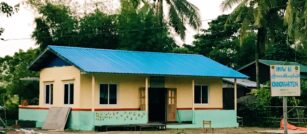
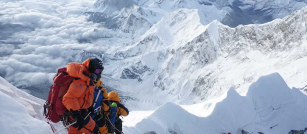
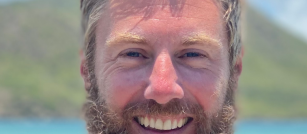
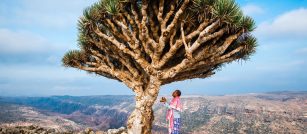
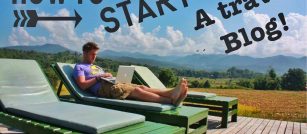
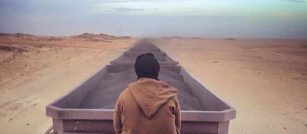
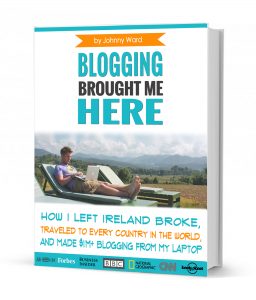 As you know, blogging changed my life. I left Ireland broke, with no plan, with just a one-way ticket to Thailand
and no money. Since then, I started a blog, then a digital media company, I've made
more than $1,500,000 USD, bought 4 properties and visited (almost) every country in the world. And I did it all from my laptop as I
travel the world and live my dream. I talk about how I did it, and how you can do it too, in my COMPLETELY FREE
Ebook, all 20,000
words or so. Just finish the process by putting in your email below and I'll mail it right out to you immediately. No spam ever too, I promise!
As you know, blogging changed my life. I left Ireland broke, with no plan, with just a one-way ticket to Thailand
and no money. Since then, I started a blog, then a digital media company, I've made
more than $1,500,000 USD, bought 4 properties and visited (almost) every country in the world. And I did it all from my laptop as I
travel the world and live my dream. I talk about how I did it, and how you can do it too, in my COMPLETELY FREE
Ebook, all 20,000
words or so. Just finish the process by putting in your email below and I'll mail it right out to you immediately. No spam ever too, I promise!

Got a question? Wanna comment? I'd love to hear from you
Comments are closed.